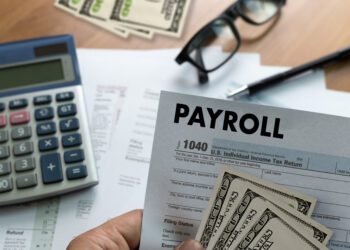Since retaking office in 2025, U.S. President Donald Trump has shaken up world trade. His imposition of tariffs on all imports into the U.S. from April 2025 sent shockwaves throughout global markets, marking the end of the globalization story of the 1990s and 2000s, a long period of open trade and ever closer interconnectivity, particularly with China. Ever since China joined the World Trade Organization (WTO) in 2001, the volume of goods exported by Chinese firms has grown dramatically. The United States was a top destination, consistently accounting for around 20% of China’s total exports worldwide. In 2021, Chinese exports to the United States topped $560 billion, more than 10 times the amount in 2001.
But in Trump’s telling, that strong growth has only ever been at the expense of U.S. industry. “For decades, our country has been looted, pillaged, raped and plundered by nations near and far, both friend and foe alike. Foreign leaders have stolen our jobs, foreign cheaters have ransacked our factories and foreign scavengers have torn apart our once-beautiful American Dream,” he declared on the day he announced the tariffs. This echoes statements he made under his previous term, when he asserted: “We are now making it clear to China that after years of targeting our industries and stealing our intellectual property, the theft of American jobs and wealth has come to an end.”
But must import competition be something necessarily destructive to U.S. firms? To probe this question, we undertook a study focusing specifically on firms operating in electronics and electrical appliances — an industry where Chinese firms have been particularly fierce rivals ever since their WTO accession. What we found is that U.S. firms didn’t just roll over in the face of import competition. How they responded to their market rivalry tells a different and rather encouraging story about competitive dynamics that all firms can learn from in today’s heated geopolitical environment.
Import competition from China activated higher levels of innovation
For our study, we selected Chinese firms in the electronics and electrical appliances industry that began exporting to the U.S. for the first time between 2001 and 2010. We gathered the information from the U.S. Securities and Exchange Commission (SEC) website as well as from China Customs.
We defined the year when a Chinese firm first entered the U.S. market as an “entry event.” We wanted to set a before-and-after marker, knowing from prior research on market competition that exogeneous shocks like import competition can put pressure on incumbent firms to react in determined ways to fend off the competition. For example, they might modify their product offerings to defend their market position. Or they might cut costs to offset lower profit margins.
We sought to analyze responses at the firm level within a specific industry, rather than considering the industry average, which tends to be the focus of most research. To get at this level of analysis, we concentrated on U.S. firms in the electronics and electrical appliances industry whose products bore a great deal of similarity to imported goods from comparable Chinese firms. For our control group, we used U.S. firms within the same industry whose products were least similar to the imported Chinese goods. We then compared how U.S. firms reacted over a period of five years, before and after the initial entry of Chinese firms into the U.S. market.
What we found diverged somewhat from previous research and existing thinking on the effects of market rivalries. Overall, we found that U.S. firms facing greater import competition from China activated higher levels of innovation relative to firms facing less competition. Moreover, those firms directly challenged by the product entry of an equivalent Chinese competitor increased their innovation output even more than other firms in the same environment.
We measured this innovation productivity by a firm’s patent filings in a given year, controlling for firms’ capital-labor ratio, size, age and R&D activity prior to the entry of Chinese product rivals.
Why tariffs may backfire
We don’t believe there’s anything unique about the 2001-2010 period that would diminish our findings in 2025 because the laws of supply and demand and competitive dynamics still hold true. What’s different today, however, is that the electronics and electrical appliances industry is more sophisticated and innovative, with many more patented technologies, making that space more competitive than ever. Also, the nature of the products entering from China is no longer primarily at the low end of the market.
Given the evolution of the market over the past decade, it’s very hard to predict what Trump’s tariffs will ultimately achieve. Competition, as any economist will tell you, is largely a good thing (so long as it raises everyone’s game, as in our study, and doesn’t degenerate into a race to the bottom). The more competition there is between companies, the more they invest in R&D, the more they innovate and the more the consumer benefits, broadly speaking. At its best, competition acts as an incentive to drive firm performance higher, at least until a certain point.
The challenge with tariffs is that if U.S. firms are protected from foreign competition, one is essentially removing a key driver to upskill, diversify, seek new areas of innovation, patent new technologies and move to the higher end of the market, because firms are artificially insulated from such considerations, forestalling the need to do anything different.
Our research challenges the assumption that competition — particularly when it comes to U.S.-China trade — must always be a zero-sum game. Indeed, some U.S. firms appear happy to relinquish the low end in favor of high-end innovation, carving out new and arguably better positions for themselves vis-à-vis foreign competitors. Crucially, we illuminate strategic paths for firms to escape competitive pressures, enhance their competitive advantage and confidently fight back through innovation.
Read the full article by Dandan Xia, Bruno Cassiman and David Wehrheim / IESE












